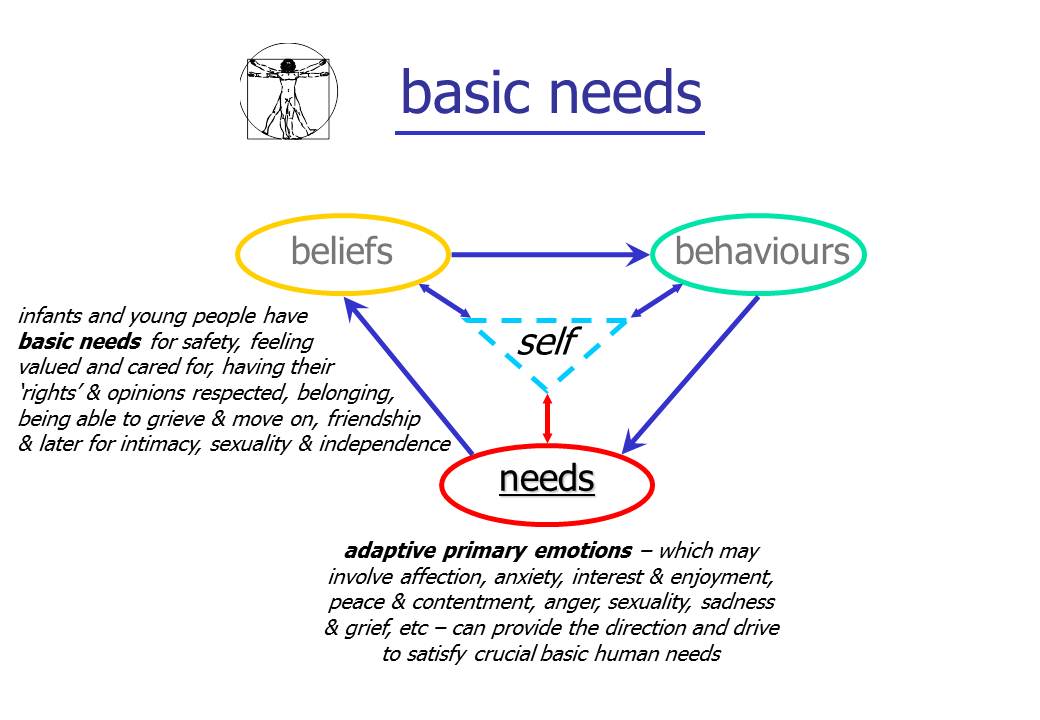Our life stories: needs, beliefs & behaviours - part one, "needs"
Last updated on 3rd October 2010
This is the first of a series of four brief posts giving more information about a model I use a lot, especially when working with people who are trying to change long term personality patterns. The ideas aren't at all original, although this particular way of presenting them is my own. So the first step in the model is "needs". This is illustrated in the following diagram:

This diagram is downloadable both as a Powerpoint slide and as a PDF file.
When we're very young, our continued survival depends on our parents or similar adult figures satisfying our basic needs. This is "attachment" territory and I tackled the whole area in a rather complex blog post earlier this year - "Our life stories: needs, beliefs & behavours". I'm now revisiting this territory and putting the diagrams on line. As I mentioned in the earlier post, the "Parental bond inventory" (and associated scoring handout) give a useful window back onto how we experienced care in our childhoods. Broader and more extensively researched is the "Adverse childhood experiences questionnaire (ACE)" (and background information). This questionnaire is adapted from the major Adverse Childhood Experiences Study, one of the largest investigations ever conducted on the links between childhood maltreatment and later-life health and well-being. Over 17,000 people have been followed since enrolment in the mid 1990's. To date over 50 scientific articles have been published and over 100 conference and workshop presentations have been made about this work. The ACE Study findings suggest that these childhood experiences are major risk factors for the leading causes of illness and death as well as poor quality of life in the United States. Interestingly research just published "Childhood Adversities and Adult Psychiatric Disorders" looked at a nationally representative sample of over 9,000 US adults and estimated that nearly 50% of child-onset and nearly 30% of adult-onset mental disorders are associated with child adversities (especially adversities involving maladaptive family functioning).
Of course we continue to have psychological "needs" throughout our lives. How well we're able to satisfy them helps to clarify how well we've been able to take forward our childhood experiences. Useful measures include assessment of relationship functioning - see for example the "Intimate bond measure" (and scoring details page 1 & page 2) and the broader relationship needs covered in the "Personal community map" (and associated instructions & questions sheets). This is important stuff - for mortality, as well as for stress resilience & wellbeing. The recent posts "Strong relationships improve survival as much as quitting smoking" and "Friendship - a three day residential workshop" discuss these issues more fully.
Tomorrow I'll post on the second, "Beliefs" section of the "Needs, beliefs, behaviours" diagram.
